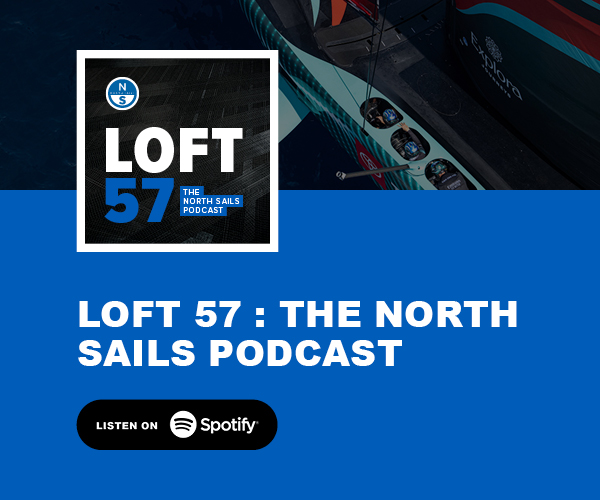The Race News – Team Philips cuts through the waves
by GK , Race HQ on 20 Sep 2000
Will the wave-piercing concept developed by Adrian Thompson revolutionize the world of ocean racing ?
If you talk to Adrian Thompson about how to improve your golf, he will come back to you with the first all composite aerodynamic club. If you are planning to enter the next Tour Voile, he will design you an ultra-lightweight, streamlined bicycle. If, like Pete Goss, your problem is to sail around the globe as fast as possible, Adrian will explain to you the concept of wave piercing in his customary calm way.
You need to be aware that the main hazard when sailing at high speed in rough seas is crashing into the back of waves as you catch up with them. In a conventional multihull, this is much like hitting a brick wall. The likelihood of breaking up or capsizing is then at its highest and you have to resort to reducing speed. Adrian’s solution – which he has already applied to naval motor boats – consists in designing bow structures which instead of slamming into the wave, cut through it.
This is the option adopted by Team Philips in which the elliptical sections, low stemmed hulls look a bit like torpedoes. The design has also dispensed with the forward crossbeam, which would have slowed her down considerably when submarining. In short the catamaran is simple and stripped down to essentials, true to the “organic” inspiration at the heart of Adrian’s design. This impression is reinforced by the two revolutionary surfboard type wing masts. Lighter and more aerodynamic than a conventional catamaran of the same size would be, Team Philips’ hopes to cause a sea-change in the accepted thinking of the sailing world.
But developing and ensuring the reliability of such a ‘concept boat’ is no simple matter. The stresses that the hulls must withstand – when the bows can be up to thirteen feet below water – are phenomenal. All the more so since the absence of a forward crossbeam entails extreme side forces. The entire project therefore rests on the latest advances in composite building technology and structural calculations. The loss of the port bow after only 1000 miles at sea also serves as a reminder that innovation involves its share of risk.
After her relaunch on September 23rd, the repaired and strengthened Team Philips must first demonstrate the validity of her design in the Atlantic, before introducing herself officially to the heavy seas of the Southern Ocean..
If you want to link to this article then please use this URL: www.sail-world.com/458

